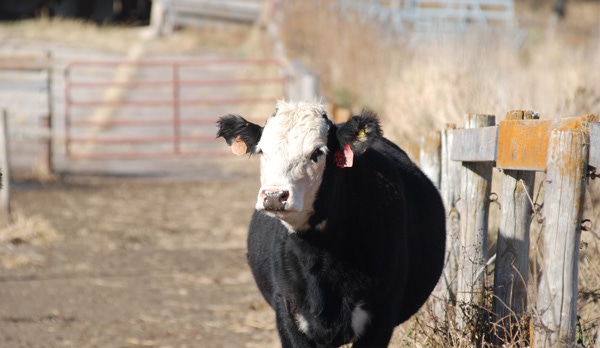Consider Energy & Protein In Drought Supplementation
In a drought scenario, both energy and protein are limiting cow performance and, therefore, supplements should be evaluated on both their energy and protein contributions to the nutrition program.
December 2, 2011

There's no easy way to manage through a drought. Some of the key elements to successfully managing a cattle operation through a drought are managing number of head/day; evaluating both short- and long-term outcomes associated with decisions; and not being afraid to think outside the box. Thankfully, drought is not the norm and typically resides outside the box.
Traditionally, when cow-herd supplementation is discussed, we focus on meeting the protein needs of the cow, with a goal of maximizing forage intake by supplementing protein, the most limiting nutrient in the available forages. However, this year, drought has severely limited the supply of both grazed and harvested forages in many regions.
In this scenario, both energy and protein are limiting cow performance and, therefore, supplements should be evaluated on both their energy and protein contributions to the nutrition program. When evaluating potential feedstuffs as supplements, consider both the cost/unit of energy (total digestible nutrients, net energy maintenance or metabolizable energy) and of crude protein.
The major concern regarding energy supplementation in a non-drought situation, when forage supply is adequate, is the "substitution effect" – essentially the energy supplement (starch- or grain-based) reduces grazed forage intake which compromises overall energy balance. Under non-drought conditions, fiber-based as opposed to starch-based energy sources are recommended. However, in a drought situation when forage supply is critically low, meeting the energy requirements of the cow using the most economical feedstuffs available (cost/unit of energy basis) is our first priority and the source of supplemental energy (fiber vs. starch) is of less importance.
If a commercially blended supplement is used (e.g., range cubes), consider the inclusion of an ionophore.
The use of ionophores (Rumensin® and Bovatec®) has become a standard practice in growing cattle diets. Rumensin is the only product approved for use in mature beef cows and must be delivered in at least 1 lb. of feed/day. Research conducted with cows indicates cows fed 200 mg/day of monensin (Rumensin) required 5%-10% less feed to maintain the same weight and body condition as cows not fed Rumensin.
During a drought situation, non-traditional grazing opportunities often present themselves. The high price of forages often makes baling look attractive. However, grazing forages almost always presents a lower cost alternative to haying. There are a number of different opportunities that may be available (grazing re-growth in wheat stubble, failed corn, milo, soybeans, etc). However, some of these grazing opportunities may carry risks, such as nitrates.
If pastures are commonly rotated during the grazing season, another option to consider is to re-graze pastures previously grazed once forage has become dormant. The objective is to encourage cattle to graze areas of pastures that weren't previously utilized efficiently. Consider mineral placement or placing supplements in these areas to encourage grazing behavior.
Pastures must be evaluated frequently to assess the amount of available forage, and over-grazing should be avoided to minimize long-term effects on the pasture.
Most producers will be relying heavily on harvested forages this fall and winter. Forage prices have increased considerably this year and as forage prices go up, the economic value associated with hay waste also increases. One of the easiest ways to reduce hay waste is to feed hay more frequently in smaller amounts (i.e., delivering hay daily vs. once/week). This concept applies regardless of whether hay is rolled out on the ground or fed in feeders.
You May Also Like


.png?width=300&auto=webp&quality=80&disable=upscale)
